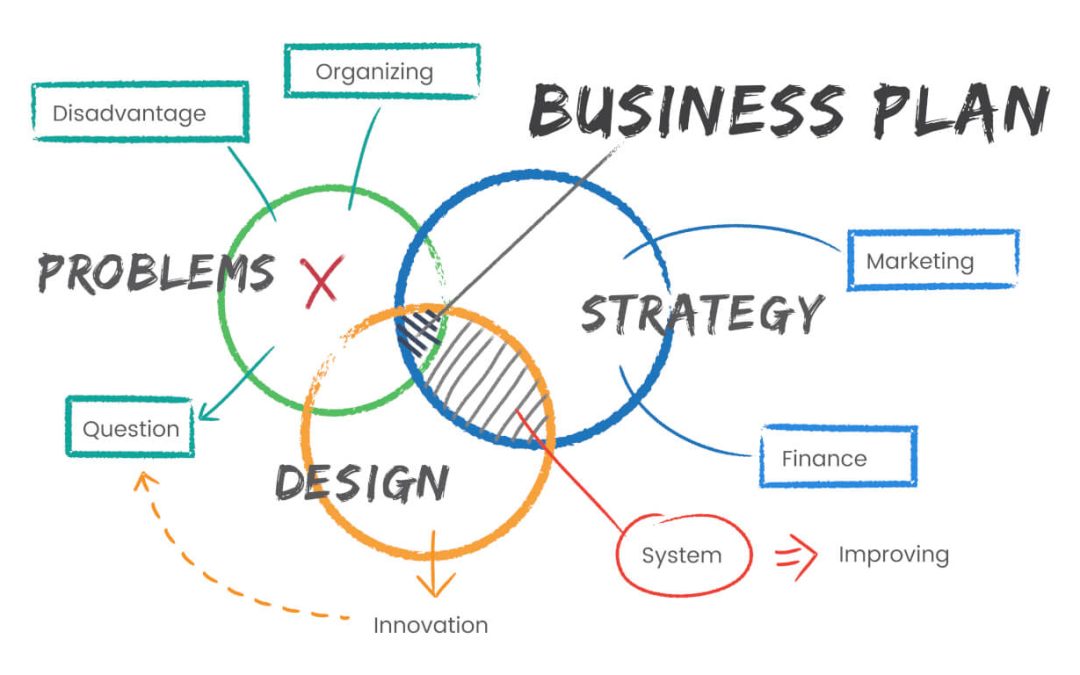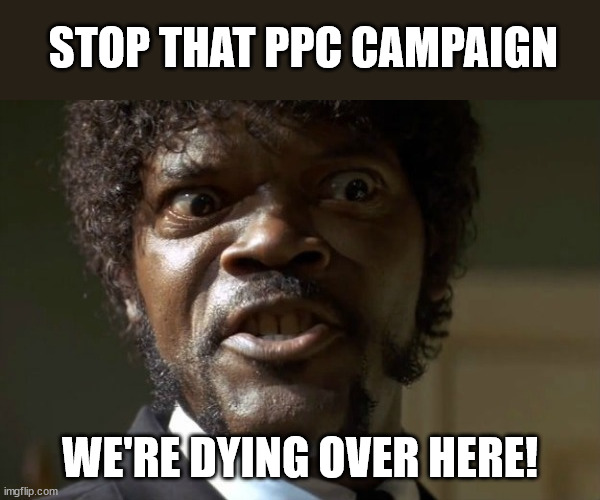[toc]
In the previous blog post, we explained what Customer Journey Map is, why it is important, how your company will benefit from it, its stages, etc.
And now the true challenge begins – right after you’ve crafted a detailed User Persona and got familiar with your Customer Journey Map it is time to implement it. It is like climbing Mount Everest – difficult, but worth every drop of sweat especially after you climb to the top. And that view from the top is magnificent!
Throughout the text, we will use the term User to describe a person who is already in the sales funnel but didn’t become a customer yet.
In this blog post, we will discuss how to implement both User Persona and Customer Journey Map into your business and why you should do it. Let’s take a look.
One Content Marketing Strategy, Multiple User Personas
It’s easy to create content if you have established all the basics we discussed in the previous blog post. You’ll just need to adjust the right customer journey stage with the right content marketing and there you go.
If it were only that simple. So, where’s the catch? The catch for developing the right content marketing strategy lays somewhere on your marketers’ desks, gathering dust.
It’s called User Persona.
If you’re not using a User Persona, you are failing to design an effective content marketing strategy. Without User Persona your Target Audience is every audience and that simply does not work. Because if you are reaching everybody it’s like you are reaching no one.
Knowing who is it you are talking to is a must for a successful business and only having a User Persona can make that happen.
Once you become aware of the importance of User Persona, you’ll be wondering why something as significant as that has been stuck somewhere between papers, gathering dust.
It doesn’t seem logical in my opinion, but the statistics show that this is not rare. Your company is not the only one who is failing to capitalize on their User Personas because of internal reasons.
According to the 2016 Benchmark Study “ Companies who meet or exceed revenue goals are 2.4X as likely to be effective or very effective at using personas than those who miss lead and revenue goals.”
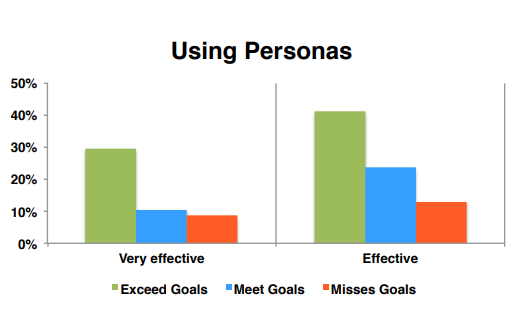
Image Source: The 2016 Benchmark Study
However, businesses have an even bigger challenge than this. They often create ONE User Persona for the ENTIRE business.
And what’s the problem with that, you might ask?
Your entire business consists of three types of Users:
- Users that have never heard of your brand,
- Users that are familiar with your brand,
- Your regular, satisfied customers.
One-size-fits-all won’t work for your brand and most definitely won’t work for your content marketing strategy. Because you must have one message for the person that has never heard of your brand, that is one User Persona. You’ll have a completely different message for a raving fan – that’s another User Persona.
The way you communicate these different messages requires different content. And to do that, you should pay attention to the customer journey of that particular User.
Yes, that’s an even bigger challenge. And by challenge we mean problem, but we’re just being nice.
The Ice Axe You’ll Need To Develop An Effective Content Marketing Strategy
If you want to climb Mount Everest, you’ll need an ice axe. And if you want to get one step closer to your Users, you’ll need to turn to your Customer Journey Map.
Remember the Customer Journey Map? That map you created some time ago when certain Bill (who doesn’t even work there anymore) thought it would be useful?
Well, that map can turn out to be extremely useful if businesses know how to use it.
But what are businesses doing instead?
Most of the time, when brands think of content marketing, they think of blog posts written to target specific groups of keywords. The expected outcome is to have that blog post series to rank high for the selected group of keywords.
Then, they pick another group of keywords to write another set of texts. In the end, they have several groups of keyword lists and matching groups of blog posts.
Sweet.
Or, is it?
You may have a group of keywords with blog posts written around them. But you lack a story. And if there is no story it will be difficult to engage people enough to come back.
Users read stories, and Google reads them too. If you don’t purposefully and masterfully build story roads for your Users, how do you expect they would find their way around?
If there’s no route for a person to follow, from the Awareness stage all the way to Consideration stage and eventually to the Purchase stage you’ll end up with a website that pulls only (hopefully) traffic and nothing more. Because most of that audience will read only one blog post and leave your website. For good.
The sad thing is that the vast majority of brands function just like this. And yet, none of those brands turn to their Customer Journey Maps, to get back on track.
And the solution is that simple.
Keep An Eye On Customer Journey Stages To Improve Your Content Marketing Strategy
When climbing Mount Everest, alpinists don’t just randomly pick the starting point they are going to use to reach the summit – they stick to the map. Look at me, talking about climbing Mount Everest as if I did it myself… Anyways…
It’s the same with your content marketing strategy – you stick to the Customer Journey Map. That map, as we already discussed, has several customer journey stages.
And how do you purposefully and masterfully build the story road for your Users?

By designing a unique, valuable, effective content for every customer journey stage your User is going through. Starting from the first one – Awareness.
Awareness Stage
At the beginning the Users are not aware that they have a problem, they don’t know your brand or both. This is the ‘Awareness Stage’.
Being too direct at this point may cost you your business. It’s like a man walking into a bar, meeting a woman and immediately proposing marriage to her.
You’ll scare your customers, and they’ll run away.
Brands shouldn’t demand anything from their Users at this get-to-know-you stage. Instead, they should focus their energy, resources, and knowledge for creating content that would imply warm welcome, not give us your money.
To achieve this warm welcome, brands should focus on free content:
- Free E-books
- Free Guides
- Free Kits
At this stage, your Users are discovering your product and brand. They are in a research mode, eager to collect more information. And free information will make them into returning visitors.
Also, make sure to use social media.
Be present on all the relevant social media platforms.
Be creative with using shareable graphics, which Users will find fairly easy to interact with.
Be consistent.
Be reliable.
Answer your Users’ requests, comments, replies, DMs – they will appreciate that.
At this stage it’s important to gain your Users’ trust, so be patient.
Consideration Stage
The second stage is the Consideration stage. This is the stage where you’ve already welcomed the User into your brand and now you would like to show him/her the tour of the house.
To do this you’ll need to write case studies. Case studies can be highly useful and in sync with your Users emotions.
It’s the same with reviews and testimonials. Talk with every satisfied customer and engage them in providing positive reviews. This could save the newcomers a lot of time.
Developing content such as tips and tricks or steps-to-consider-if is also an effective way to meet the Users at the right emotional stage of their customer journey.
Your content marketing strategy also needs to be industry related, to put you on the right spot, and provide even greater value to your Users. Define Users’ pain points and show them how you can solve them. By doing this, your success at this stage is guaranteed, and hopefully, to reach the next one without any trouble.
This stage is about you as a brand. You should still have your eye on the customer, but it’s your time to show what you got. Present your service/product and explain how they will benefit from it, and be detailed about it. The more the info you provide, the more likely your Users will become your customers.
Decision Stage
The third stage is the one where Users are finally agreeing to stay for a cup of tea or coffee. After going through all the research, reviews, and demos your Users are at the final stage – the Checkout Page, ready to press that CTA (call to action) button.
In this stage, your content marketing strategy should be at a level above your competitors and show your Users why your brand is their best choice. Use:
- Product or Service Tutorials
- Comparison Infographics
- Comparison of Blog Posts
- Live Demos
- Coupons
And remember, purchasing is not the last time your customers should hear from you. Thank you emails, follow-up emails, promotions, discount coupons – all of these show that you, as a brand, nurture the relationship with your Users.
Yes, we are aware that doing all this by yourself would be a difficult job to do, even if you climb small Mount Everest on a daily basis. But, unlike the rest of the brands who just inform you that there is such a thing as Customer Journey Map and content marketing but don’t do anything about it, we go step further.
Besides informing you we actually offer a professional service to do all these steps for you.
We have a dedicated marketing team who is on top of their game and they are eager to take some new projects in and help your business flourish.
Why Rely On WebMaxFormance For Your Content Marketing
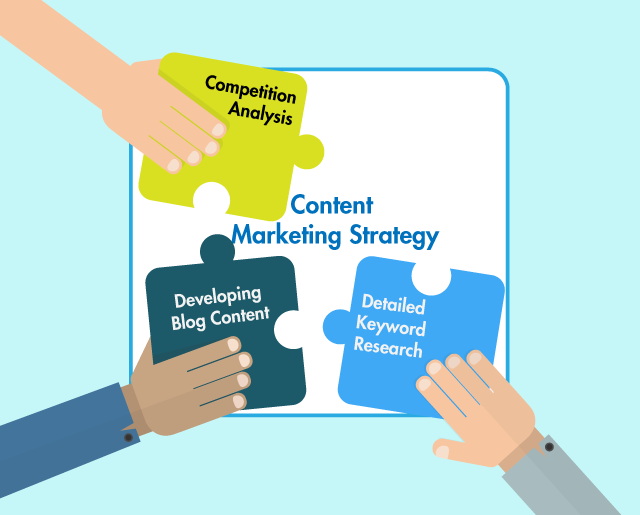
Our ten years of experience in doing digital marketing is speaking for itself. With time we have managed to learn, adapt, grow and become better in what we do. Especially when it comes to creating an effective content marketing strategy.
We understand that content marketing is not just about words. It is also not just about the Customer Journey Map or User Persona either.
It is one brand’s (hi)story and future and we are aware of it. It is all that combined and then some. We understand because we’ve been there.
Trusting our team of marketers and copywriters, your brand awareness can increase significantly. We’ll do all the leg work for you, which includes:
Competition Analysis
Content marketing strategies based on assumptions are good as climbing Everest with slippery flip-flops. Without a doubt, you will fail. We don’t do assumptions. We do research and data.
And the first thing we’ll do when crafting that content marketing strategy is to provide an accurate, seeing-the-big-picture type of competition analysis. It’s our goal to gain as much information as possible about your competitors and develop a worthy content marketing strategy that will excel above and beyond what your competitors are offering.
Detailed Keyword Research
Keywords are pretty important in the content marketing world. WebMaxFormance marketing team is well aware of it.
That’s why we dedicate ourselves to the keyword research at the very beginning of the creation of a content marketing strategy. This process is not a 5-minute task that is done with one search performed on the search queries.
As professionals, we have brainstorming sessions about the possible keywords to use.
We use up-to-date tools for keyword research, that provide reliable and measurable results.
We are constantly following the latest trends in the industry.
Also, for each keyword, we provide a monthly analysis, competition analysis, keyword difficulty, and CPC.
Developing Blog Content
We also offer excellent content writing services. WebMaxFormance has copywriters dedicated to research. Our nerdy copywriters are always hungry for new material which is for them like ice cream is to kids.
Our team of copywriters doesn’t settle for what they already know. We are aware that we live in the fast-changing industry and we need to be up to date with our knowledge, changing metrics, Google algorithms – everything else that goes around the social media marketing world.
We consider the Customer Journey Map and the User Persona when writing content. We aim to be in-line with what goes through Users heads, the entire User experience, as well as their emotions. We care about Customer Journey Map because we know that is the cornerstone of any valuable content marketing strategy.
And if all of this is too much to take in, then we would like to take responsibility for it.
To Sum Up
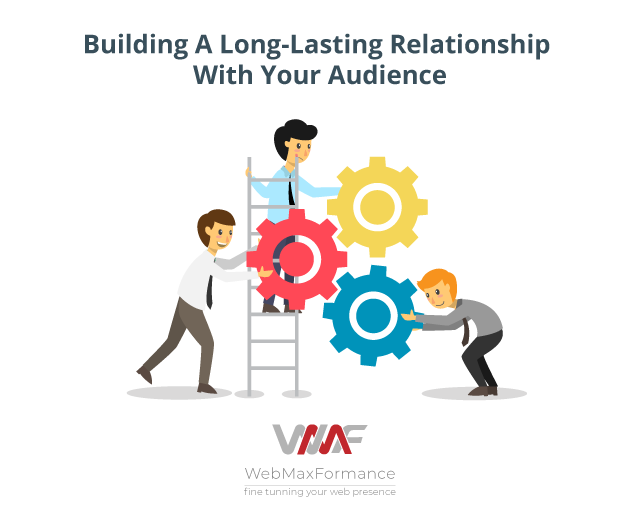
The worse thing than having one User Persona for the entire brand is not having a User Persona at all.
Even though it’s 2019, businesses are still making the same mistake of underestimating the value of the User Persona.
And every business needs to have one, to be able to create a good Customer Journey Map and develop a successful content marketing strategy. Your business’ success depends on it. Unfortunately, this is not a common practice.
Instead, business focus on one set of keywords after another.
However, this brings them nothing since they’ve never considered their User’s needs while creating a content marketing strategy.
There are three customer journey stages that need to be addressed while crafting your content marketing strategy:
- Awareness
- Consideration
- Decision
This may sound like a piece of cake, but in reality, it’s really not.
It’s a complex and time-consuming job which requires the attention of professionals.
WebMaxFormance is such a company.
We have 10 years of experience and we are proving our skills with each task and assignment.
Our dedicated team has a profound knowledge of developing a content marketing strategy from scratch. It’s a process that takes time, resources, a certain set of skills and a lot of patience.
When it comes to crafting a content strategy, our people have the skills to do:
- Competition
- Detailed Keyword Research
- Developing Blog Content
Most importantly, we always use the User Persona and Customer Journey Map as a start-up point in creating an effective content marketing strategy.
If you need a content marketing strategy that actually works we are here for you.


